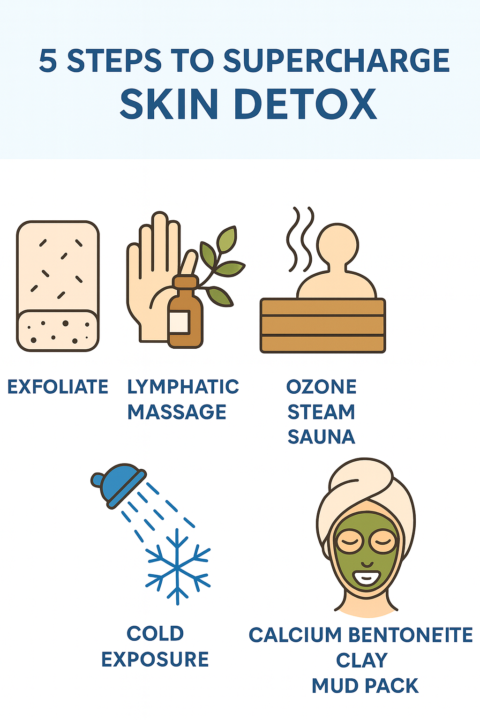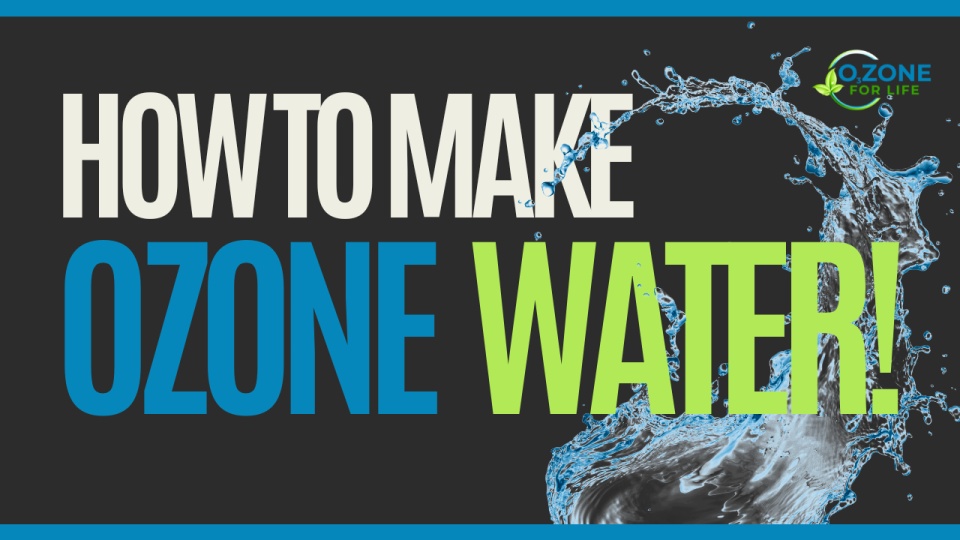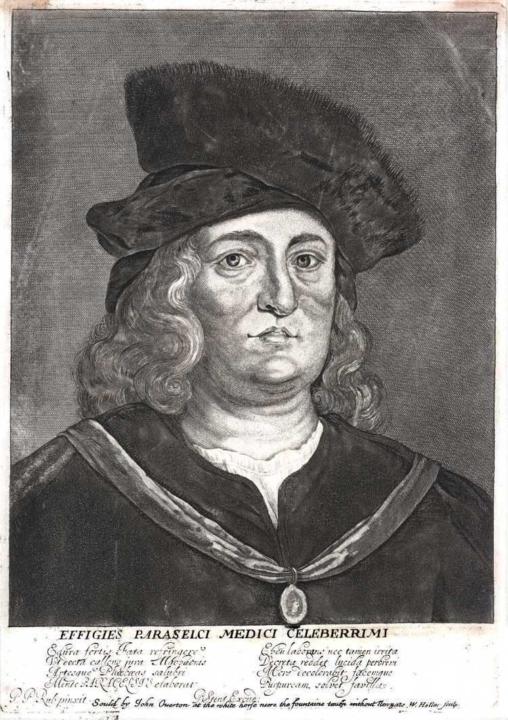Activity
Mon
Wed
Fri
Sun
Jan
Feb
Mar
Apr
May
Jun
Jul
Aug
Sep
Oct
Nov
Dec
What is this?
Less
More
Memberships
13 contributions to Ozone For Life
✨ Community Update ✨
Hey family — quick announcement: Our Friday classes and huddles are paused until January. Blake and I are traveling for a few weeks, gathering inspiration and pouring energy into the book — big things are unfolding. Use this time to integrate, recharge, and stay plugged in. January will come with fresh energy, breakthroughs, and powerful upgrades. With love, Arttemis
Yikes! I am Detoxing... Headaches, Brain Fog, Fatigue: What to do?
🚨 Detox Protocols & Herxheimer Symptoms – Part I: Supporting Your Skin (Your 3rd Kidney) You’re full-on into your ozone or detox protocol and… YIKES. Suddenly you’re hit with: - Intense headaches - Debilitating fatigue - Itchy red rashes - Irritability through the roof - That overall blah, stuck feeling Sound familiar? Yep, these can be Herxheimer symptoms — "Herxing" is what happens when your body is killing off so many viruses and parasites that your elimination pathways just can’t keep up with the die off. 👉 Don’t panic. In Part II of this series, I’ll show you exactly how to clear those symptoms fast. But here’s the key: not every headache, rash, or sluggish day is Herxheimer. Sometimes it’s just your body needing extra support. So instead of blaming every symptom on Herx, let’s focus on the real solution: 🔑 olution: Activate the 5 Flavors. Drain the 5 Detox Systems. Your body detoxes through 5 MAJOR SYSTEMS: Skin, Colon, Liver, Lymphatic System, and Lungs. And the two most important flavors to activate? - Sour → Lymphatic flow with Raw Lemonade/Limeade - Bitter → Liver support with Celery Juice, Bitter Greens, and Lemon Balm Glycerin Tincture Today, we’re starting with your Skin — your largest organ of elimination, your “third kidney,” and the exhaust valve when your liver or kidneys get overloaded - that blah feeling and headaches are cleared when you can REALLY OPEN UP YOUR SKIN and let it breathe a little!!! 🧖♀️ 🧖♀️ 5 Steps to Supercharge Skin Detox 1. Exfoliate to Breathe Again Dead skin traps toxins and clogs pores. A simple warm washcloth scrub or sea salt mixed with lavender or frankincense oil clears away buildup and re-opens your skin’s “breathing channels.” 2. Lymphatic Massage with Oils Grapefruit, cedarwood, and juniper oils wake up your lymph system, improve circulation, and prep your sweat glands before ozone sauna. Bonus: this technique revives dull, aging skin and firms tissue after 40. (Comment if you want my exact lymphatic massage oil recipe!)

1 like • Oct 16
Hey Arttemis I am shock what I just seen on the video about Rectal/Vaginal Ozone Insufflation, I never ever heard of taking the syringe directly from the machine to the rectal , I always thought you need a bag, how do you Know how much ozone is going inside of you or do it make a difference, flooding your body with oxygen is definitely what is going to happen , please explain!!!!!! lol!
💧The #1 Morning Ritual for Healing Chronic Fatigue
What if your water could do more than hydrate? What if it could help detox your cells… boost your energy… support your immune system… and even reverse the root causes of chronic illness? That’s exactly what happens when you drink Ozone-Infused Water — one of the simplest, yet most powerful healing tools in the Ozone for Life system. 👉 Ozone Water is nature’s reset button. Just one glass can oxygenate your cells, kill harmful microbes, and energize your mitochondria — all without a single pill, powder, or prescription. Here’s why it works: 🧬 It destroys viruses, bacteria, and parasites in your gut 💥 It recharges your mitochondria (your body’s energy powerhouses) ♻️ It gently detoxifies your liver, colon, and lymphatic system 🧠 It clears brain fog, fatigue, and burnout from the inside out No side effects. Just vibrant, cellular energy. If you’re 45+ and dealing with low energy, inflammation, or chronic fatigue… your body is calling for oxygen. And this is the fastest way to answer. 🎁 Want to learn how to make Ozone Water at home? WATCH NOW! It’s time to stop chasing quick fixes… And start healing with oxygen, nature, and the 7 Dimensions of Health. P.S. Oxygen is life. When you drink ozonated water each morning, you’re not just hydrating — you’re activating healing.

Why Ozone Works
The Biochemistry of Regeneration and Detoxification “There is a power in nature which is stronger than any poison, any germ, and any imbalance—when you return to the laws of life, this power begins to work through you.” — Paracelsus, Father of Toxicology Now that you understand the oxygen crisis in your body, it’s time to explore how ozone therapy actually works. This is where science meets the spirit of all detoxification in nature and in the body. Because when you see what this molecule does inside the body—you’ll never look at healing the same way again…. Or a lightning storm as it floods mother nature with Ozone in the sky! ⚙️ What Is Ozone, Really? Ozone (O₃) is a molecule made up of three oxygen atoms. It’s created when high-energy electricity (like lightning or Cold Plasma technology) splits O₂ molecules and recombines them into O₃. That extra oxygen atom? It’s highly reactive—and that’s where the real power lies. All toxins in nature carry a positive charge—yes, that’s right! Viruses, bacteria, fungi, protozoa, heavy metals, and parasites are all positively charged. And you guessed it—ozone carries a negative charge. This means ozone has a divine intelligence, naturally seeking out toxins in the body and oxidizing them. It’s pure biochemistry and Mother Nature working together to cleanse your entire system. Ozone is both a signaling molecule and a cleansing force. It doesn’t just “add oxygen” to your body—it delivers it with intelligence. When introduced into the body through water, insufflation, sauna, or IV, ozone: * Disarms pathogens by oxidizing their outer membranes * Breaks down environmental toxins and biofilms * Triggers mitochondrial regeneration and energy production * Rebuilds red blood cell flexibility, improving circulation * Modulates the immune system, making it smarter—not just stronger 🔬 The 6 Core Biological Actions of Ozone 1. Pathogen Killer
Ozone is a potent antimicrobial—meaning it can safely destroy harmful organisms in the body like viruses, bacteria, fungi, and parasites. It does this by oxidizing the cell walls or protective membranes of pathogens. These invaders rely on fragile structures made of lipids and proteins to stay alive. Ozone reacts with those molecules, breaking them apart and rendering the organisms harmless or dead.

Life is Good with Ozone!
Loving all the education I am getting from Arttemis and team. I joined less than a week ago and am using my ozone machine in ways I had not before. It's like having a private ozone coach. I feel inspired! 💚 Dr Rowan is super excited about Ozonated Glycerin. Have you looked into this? What can you tell us about this?
1-10 of 13
@lloyd-banks-2360
I love wisdom and and KNOWLEGDE and understanding that is why I am here!
Active 4d ago
Joined Dec 21, 2024
Michigan
Powered by



